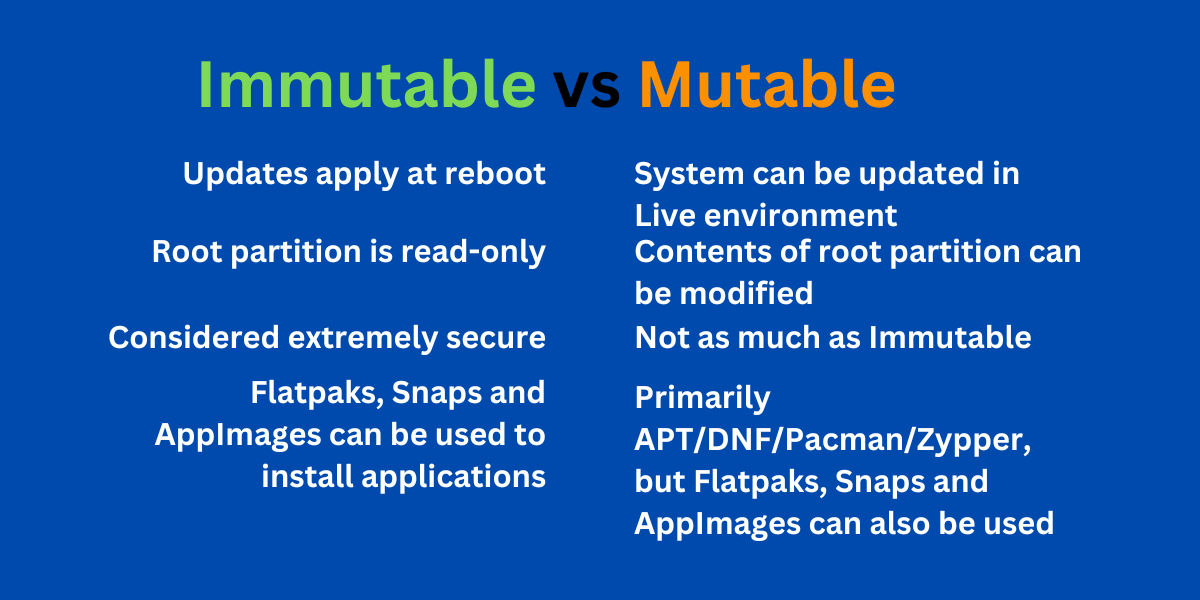this post was submitted on 13 Jan 2025
360 points (93.5% liked)
Linux
54046 readers
1208 users here now
From Wikipedia, the free encyclopedia
Linux is a family of open source Unix-like operating systems based on the Linux kernel, an operating system kernel first released on September 17, 1991 by Linus Torvalds. Linux is typically packaged in a Linux distribution (or distro for short).
Distributions include the Linux kernel and supporting system software and libraries, many of which are provided by the GNU Project. Many Linux distributions use the word "Linux" in their name, but the Free Software Foundation uses the name GNU/Linux to emphasize the importance of GNU software, causing some controversy.
Rules
- Posts must be relevant to operating systems running the Linux kernel. GNU/Linux or otherwise.
- No misinformation
- No NSFW content
- No hate speech, bigotry, etc
Related Communities
Community icon by Alpár-Etele Méder, licensed under CC BY 3.0
founded 6 years ago
MODERATORS
you are viewing a single comment's thread
view the rest of the comments
view the rest of the comments

NixOS is immutable and atomic, but it isn't image-based.
Immutable simply refers to how the running system configuration can't be changed by simply putting a file somewhere (e.g. copy a binary to
/bin, which is a bad idea).For example, Fedora Atomic and derivatives are image based, although they are more flexible than the A/B types like SteamOS.
OpenSUSE MicroOS uses btrfs snapshots to apply updates atomically, and is more flexible than most image based immutable distros.
Edit: But I don't think those terms have a single definition, so how would you differentiate these terms?
I'm on NixOS right now and just dropped a Chewy in my
/bin, only had tosudo touch /bin/chewy.Good point. I'll have to stop using immutable and stay with atomic (and declarative).
Interestingly
/binand/usr/binare not in PATH by default, so/bin/chewycan only be executed by its path directly and won't affect the systems reliability.That doesn't make it not immutable. /bin is not a critical directory in NixOS, only the contents of /nix are, which are immutable. /bin isn't even part of your path by default.
Well that was an approximation to keep it simple and disprove the given example. There are other directories in the root filesystem that are in the path by default, or used in some other critical way (like
/etc). Even if they are links to directories in the nix store you can replace the link.I understand, but it didn't really disprove anything. Immutable distro's protect core components from being modified. /bin is hardly relevant on NixOS, so of course it wouldn't be made immutable.
/etcis also generally not considered a core component, and every immutable distro I've used left it writable. By default, every binary installed through NixOS is put in/run/current-system/sw/bin, which is immutable. Many other important files are also linked to/run/current-system, which is why the whole directory is immutable. It essentially takes the place of what the root directories would be on an FHS distro.I don't know any other path used in critical ways that is not immutable. The primary paths that immutablility is relevant for in FHS distros are /usr, /lib, /lib64, and /bin. None of these paths are really used on NixOS, besides some files symlinked there for edge cases, like /bin/sh.
If you were to remove all the symlinks you are able to, the system would still work for the most part. You would lose custom configurations in /etc, but that is true for most immutable distros. Most apps have a default configuration to fallback to.
The misunderstanding comes from the fact that immutable is a poor description for any OS, which is why many now use atomic instead. Even in immutable distros, many files can still be modified, and things can still be broken if you try hard enough. Still, NixOS definitely falls under the general description of and immutable distro, as the core of the OS is immutable.